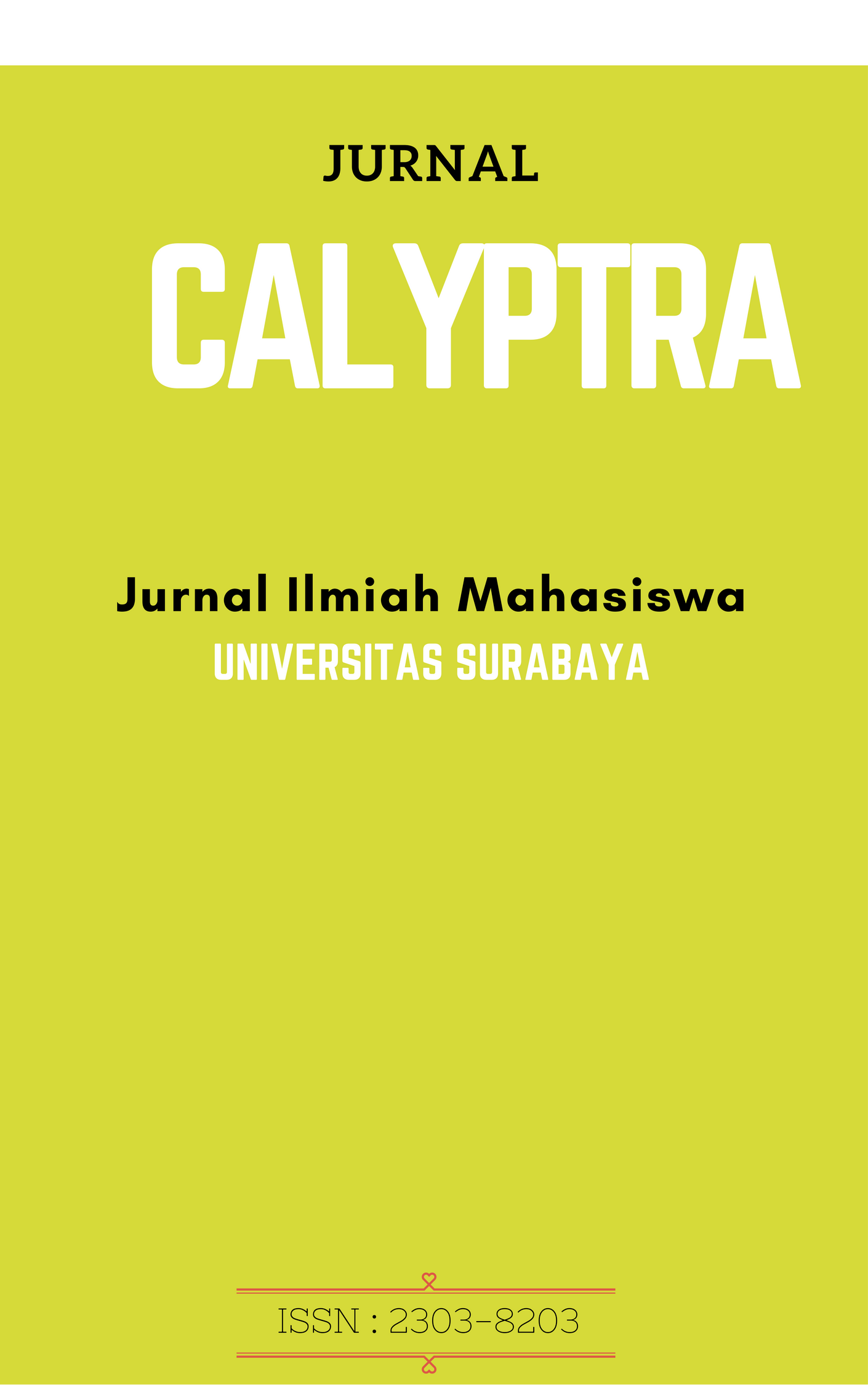CUSTOMER SATISFACTION ON IMAGE, TRUST, AND CUSTOMER LOYALTY: STUDI KOMPARATIF RESPONDEN MUSLIM DAN NON-MUSLIM BANK SYARIAH MANDIRI DI SURABAYA
 Abstract Views:
106 times
Abstract Views:
106 times
 PDF - FULL TEXT Downloads:
120 times
PDF - FULL TEXT Downloads:
120 times
Abstract
Intisari - Indonesia merupakan Negara yang mayoritas beragama Islam, dan saat ini, Bank Syariah merupakan bank yang memiliki produk dan layanan yang berbeda, sehingga dalam Penelitian ini bertujuan untuk membandingkan pengaruh Variabel Customer Satisfaction terhadap Image, Trust, dan Customer Loyalty Muslim dan Non-Muslim di Bank Syariah Mandiri, Surabaya. Jenis penelitian yang digunakan adalah penelitian kausal dengan pendekatan kuantitatif. Penelitian ini menggunakan pendekatan purposive sampling, dimana sampel berupa responden yang melakukan transaksi minimal lima kali dalam satu tahun terakhir bersama Bank Syariah Mandiri. Responden dalam penelitian ini berjumlah 285 orang.Analisis dalam penelitian ini dengan menggunakan model SEM (Structural Equation Modeling) dan diolah menggunakan software SPSS versi 18.0 for Windows serta Amos 16 untuk pengujian Model Measurement dan Structural.Hasil penelitian ini menunjukkan bahwa terdapat empat Variabel yang memiliki perbedaan antara Responden Muslim dan Non-Muslim yaitu Customer Satisfaction terhadap Image, Customer Satisfaction terhadap Trust, Image terhadap Trust dan Trust terhadap Customer Loyalty. Dan terdapat dua Variabel yang tidak memiliki perbedaan, diantaranya yaitu Customer Satisfaction terhadap Customer Loyalty dan Image terhadap Customer Loyalty.
Kata kunci: Customer Satisfaction, Image, Trust, Customer Loyalty
Abstrack - Indonesia is a country that is predominantly Muslim, and this time, Islamic Bank is a bank that has a product and service that is different, so in this research is to compare and influence Variable Customer Satisfaction to Image, Trust and Customer Loyalty Muslims and NonMuslims Bank Syariah Mandiri, SurabayaThis type of research is causal research with a quantitative approach. This study using purposive sampling approach, in which a sample of respondents who conduct transactions one minimum five times in the last year with Bank Syariah Mandiri. Respondents in this study amounted to 285 people. The analysis in this study using a model of SEM (Structural Equation Modeling) and processed using SPSS software version 18.0 for Windows and Amos 16 for testing Measurement and Structural Model.These results indicate that there are four variables that have a difference between respondents Muslims and nonMuslims are against Image Customer Satisfaction, Customer Satisfaction of the Trust, the Image of the Trust and the Trust to Customer Loyalty. And there are two variables that do not have differences, among which Customer Satisfaction to Customer Loyalty and Image of the Customer Loyalty
Keywords: Customer Satisfaction, Image, Trust, Customer Loyalty
Downloads
References
Cross Cultural Management: An International Journal, Vol.
14(2): 93-104.
Amin, M., Isa, Z. and Fontaine, R. (2011), “The role of customer satisfaction in enhancing customer loyalty in Malaysian Islamic banks”, The Service Industries Journal, Vol. 31 Nos 9/10, pp. 1519-32.
Amin, M., Isa, Z., Fontaine, R., 2013, Islamic Banks: Contrasting the Drivers of Customer Satisfaction on Image, Trust, and Loyalty of Muslim and Non-Muslim Customers in Malaysia, International Journal of Bank Marketing, Vol. 31(2): 79 – 97.
Arasli, H., Katircioglu, S.T. and Mehtap-Smadi, S., 2005, A Comparison of Service Quality in the Banking Industry: Some Evidence from Turkish- and Greek-speaking Areas in Cyprus, International Journal of Bank Marketing, Vol. 23(7): 508-26.
Caruana, A., 2002, Service Loyalty: The Effects of Service Quality and The Mediating Role of Customer Satisfaction, European Journal of Marketing, Vol. 36(7/8): 811-28.
Flavian, C., Guinaliu, M. and Torres, E., 2005, The Influence of Corporate Image on Consumer Trust, Internet Research, Vol. 15(4): 447-70.
Fornell, C., Johnson, M.D., Anderson, E.W., Cha, J. and Bryant, B.E., 1996, The American Customer Satisfaction Index: Nature, Purpose and Findings, Journal of Marketing, Vol. 60(4): 7-18.
Ghozali, I., 2005, Model Persamaan Struktural: Konsep dan Aplikasi dengan Program AMOS ver. 5.0, Badan Penerbit Universitas Diponegoro.
Hair, J.F., Black, W.C., Babin, B.J., dan Anderson, R.E., 2010, Multivariate Data Analysis: A global Perspective 7thed., New
Jersey: Pearson Prentice Hall.
Jan, M.T. and Abdullah, K., 2014, The Impact of Technology CSFs on Customer Satisfaction and The Role of Trust, International Journal of Bank Marketing, Vol. 32(5): 429-447.
Kotler, P. and Keller, K.L., 2015, Marketing Management 15 Edition, United States of America: Pearson.
Kuenzel, S. & Halliday, V.S. (2008). Investigating antecedents and consequences of brand identification.Journal of Product and Brand Management, 17 (5): 293– 304.
Loo, M., 2010, Attitudes and Perceptions Towards Islamic Banking Among Muslims and Non-Muslims in Malaysia: Implications for Marketing to Baby Boomers and X-Generation, International Journal of Arts and Sciences, Vol. 3 (13): 453-85.
Nguyen, N. and Leclerc, A., 2011, The Effect of Service Employees’ Competence on Financial Institutions’ Image: Benevolence as A Moderator Variable, Journal of Services Marketing, Vol. 25(5): 349-60.
Schiffman, L.G. dan Kanuk, L.L., 2007, Consumer Behavior 9th ed., New Jersey: Prentice Hall.
Warjiyo, P., 2006, Stabilitas Sistem Perbankan dan Kebijakan Moneter: Keterkaitan dan Perkembangannya di Indonesia, Buletin Ekonomi Moneter dan Perbankan, Vol 8(4): 429-454.
Zikmund, W.G., Babin, B.J., Carr, J.C., dan Griffin, M., 2009, Business Research Methods 8th ed., Cengage Learning.
- Articles published in CALYPTRA are licensed under a Creative Commons Attribution-ShareAlike 4.0 International license. You are free to copy, transform, or redistribute articles for any lawful purpose in any medium, provided you give appropriate credit to the original author(s) and the journal, link to the license, indicate if changes were made, and redistribute any derivative work under the same license.
- Copyright on articles is retained by the respective author(s), without restrictions. A non-exclusive license is granted to CALYPTRA to publish the article and identify itself as its original publisher, along with the commercial right to include the article in a hardcopy issue for sale to libraries and individuals.
- By publishing in CALYPTRA, authors grant any third party the right to use their article to the extent provided by the Creative Commons Attribution-ShareAlike 4.0 International license.



